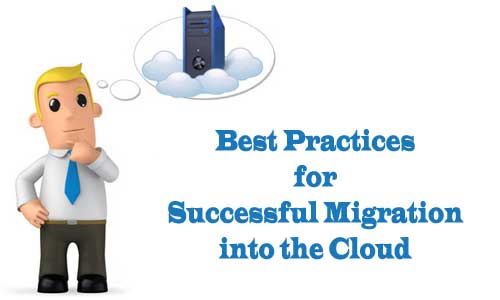
Cloud computing also often called as utility model in the cloud is gradually ascending the steps. According to IDC, a turning point in terms of its adoption by organizations was with 29% of companies that had adopted this model in the year 2012 and around 54% companies will adopt it in the year 2013.
There is no doubt that the economic context will always remain one of the main drivers of this model. Cloud computing allows companies to be much more agile in their business, gain speed when implementing the projects, minimize risks by eliminating upfront investments in IT and long-term contractual relationships, as well as ensure the capacity to adapt to the market needs. This allows companies to better face the future competitive conditions than the traditional model.
A leap forward
However, like everything else, to leap right into the cloud there are certain best practices that are recommended. It is advisable to face the migration to the cloud “progressively with the advice of professionals, as well as a first approach with a test solution that allows you to check for yourselves all that cloud means in terms of ease of management and resource efficiency.”
Moreover, in many cases companies already have their own infrastructure and better to go step by step, so that the correct integration infrastructure with versatility own this model and, if so determined, even to reuse the hardware already acquired by the company earlier.
What services you can bring to the cloud?
Today, virtually any IT service that companies require can be put in the cloud. “Some companies take their web platforms and email, storage, collaborative business applications such as service desk, ERP, CRM, accounting…” to the cloud. Basically, what’s important is that companies must be aware about cloud computing, its characteristics (self-demand, accessible networks, mechanisms and standard devices, set of shared resources dynamically assignable, instant elasticity, monitored and measured resources…) opens new possibilities for companies to give them access to technological solutions previously which were only available to the large organizations.”
For example, having different environments for development, testing and production, as recommended best practices for managing IT platforms or launch a backup center.
Mistakes to avoid when making a leap to the cloud
There are many common mistakes companies often make when making a leap to the cloud. However, you need not to worry, you can easily correct avoid such mistakes. “I really should not have any fear of migration to the cloud-claim from the company consulted. However, it is imperative to note that in many cases it is a change management process within the organization, as they pass before internalizing outsourced resources.”
For the same reason, as in any process of outsourcing, it is essential to establish a trust relationship with the cloud providers, being advised by professionals and warranties and service levels. “You need to know things like where are their data centers located, which measures and monitoring security systems are implemented by the service provider, what kind of staff and support levels they offer, who are their technology partners and what certifications do they have, the service level agreements (SLA), levels for redundancy and network connectivity, etc…” should be confirmed.
In short, we must be aware that the cloud is not ethereal, but a service that becomes reality in the provider’s premises. So make the right choice when choosing a cloud hosting service provider. “You have to know and how they will manage business data you place in their data centers.”
Changes in the management of IT departments
Opting for a cloud model also affect the IT department itself and the management staff of the company. “On a cloud model, there are many operations (backup policy, migration, capacity expansions, put into production, configurations…) that need to be carried out which usually consumes much time in the technical areas of companies”.
In this sense it is the provider who assumes all the complexities generated by network management systems and releases resources and technical departments, who can engage in developments related to the core business of the company.